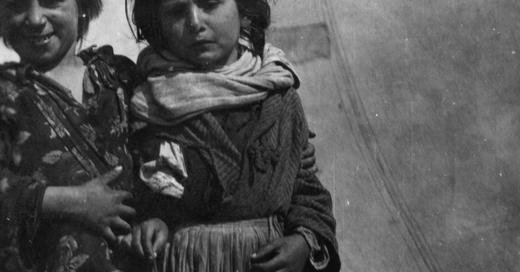The Roma people are Europe’s largest ethnic minority, estimated to be between 10 and 12 million people, 6 of which live in the EU. Despite the size of its population, the Roma community’s life expectancy in the EU is 10 years lower than the general population, are at a greater risk of poverty than other groups, and are more likely to not complete secondary education. Similarly, anti-gypsyism, the discrimination against the Roma people, is a fairly normalised and widespread form of discrimination found in Europe and is often entrenched in countries’ legal and welfare systems.
So how did we get here? How come such a large group of people can be so often overlooked, marginalised, and discriminated against? A possible answer might lie in Europe’s historical treatment of the Roma.
From India to Europe
The historical roots of the Roma people are often traced back to northern India. Their language, Romani (sometimes known as Romany or Romanes), is part of the Indo-European language family, more precisely its Indo-Aryan part, which groups it together with Sanskrit or Hindi. The Roma people have migrated from India and it is argued that the Roma groups appeared in Europe during the 14th and 15th century. Across Europe, ‘Roma’ encompasses many different ethnic Roma groups within that classification.
Assimilation throughout centuries
For a large part of their European history, the Roma were migratory peoples, travelling between towns. However, it is not exactly clear if they migrated voluntarily, or if migration was more of a consequence of the actions taken against the Roma by many European countries. Many picked up trades suited for such a life, from various crafts, metalwork, and livestock trading, to providing entertainment.
However, their trades became a sore spot for many local guilds which saw the Roma as competition. The governing bodies disliked the peoples as well, due to their nonconforming lifestyle, which made it difficult to rule them and made them ‘unadaptable’ in the eyes of those in power. Given their nonconforming nomadic lives, the Roma also found their way into superstitions, getting blame for evils from the majority population, some of which last to this day. The solution to this issue was to pass anti-Roma policies and laws.
An example of some of the worst is an edict by the Holy Roman emperor Maximilian I, mandating the Roma to disappear from the Empire by 1501. Should they not follow this deadline, the edict made it legal for any citizen to kill any “gypsy” they found. In the 17th century, French Louis XIV sentenced all Roma men to a life in the galleys, while the women underwent systematic sterilisation and lost their children to poorhouses. Removing Roma children as a part of assimilation policies was also decreed under the Habsburg empress Maria Theresa. Additionally, in the area that is today’s Romania, the enslavment of Roma was allowed for centuries. This systematic, centuries-long persecution of the Roma most likely only intensified the peoples’ nomadic behaviour.
It is important to mention that there were parts of Europe that treated the Roma slightly better, such as the Ottoman Empire, as it wasn’t as centralised as the empires in the West and was more apprehensive of multiple ethnicities living alongside one another. But, as the Wilson Center emphasises, ‘slightly better treatment’ was still an exception.
The Holocaust and its aftermath
Europe’s complicated and prejudiced relationship with its Roma people reached its ugliest during the Second World War. Similar to the Jewish population in Europe, the Nazis also considered the Roma “racially inferior”, unless they were thought of as well-integrated Germans, or the so-called “pure Gypsy blood”. The rest of the Roma population in Germany who didn’t fit these criteria were rounded up and deported to concentration camps, where they were experimented on, forced into labour, and murdered in concentration camps. The situation in the areas occupied by Nazi Germany wasn’t much better. The Roma were shot alongside the Jews and communists, or deported, with many dying of various diseases or starvation.
It isn’t clear how much of the Roma population perished during the Holocaust. Some estimates suggest that between 250.000 and 500.000 out of ca. 1 or 1.5 million of European Roma died during the war.
However, life for the survivors wasn’t easy. Just like other displaced people, the Roma had to struggle to get citizenship in one of the newly created or liberated countries, while often trying not to be sent back to their home countries in the newly established Eastern bloc.
After the war, a big part of the Roma Holocaust survivors ended up living in the former USSR countries. They were given some social benefits, such as housing, education, or medical care at the time. But despite these, the minority was still made second-class citizens, as the communist regime attempted to assimilate them once again. The Wilson Center further states that during this time the Roma were subjected to “forced assimilation; segregation in housing and employment; repression of the Romani language and repression or manipulation of Romani cultural organizations; confiscation of private property including horses and wagons; and, among others, child abduction and forced sterilization”.
Where do we go from here?
The plight of the European Roma minority is an ongoing problem on the continent. From unemployment to education and neighbourly relations, the community still encounters barriers, systemic discrimination, and marginalisation. Throughout European history, we can find official structures and institutions trying to fully assimilate the Roma, all the while being unwilling to provide basic living standards or rights for the community. But deep-rooted “anti-gypsyist” prejudice has also been a part of the problem. Until Roma issues are covered from various perspectives and without unnecessary stereotypes and victim-blaming, it will be difficult to create real change.
The progress on improving the situation in Europe has been quite slow. But there is hope. With the EU Roma strategic framework for equality, inclusion and participation for 2020 - 2030, the EU is trying to make way for faster and more efficient progress. The framework builds on previous EU efforts which focused more on the national level of action, but recognises the need for the EU to better support the Member States in the implementation of the framework. Special attention is also paid to the involvement of the Roma community itself.
It is, of course, too soon to predict the framework’s potential success. However, it seems that the EU realises how important the Roma community’s involvement is and that this issue requires a more intersectional approach. And that is a good start.


Follow the comments: |
|
